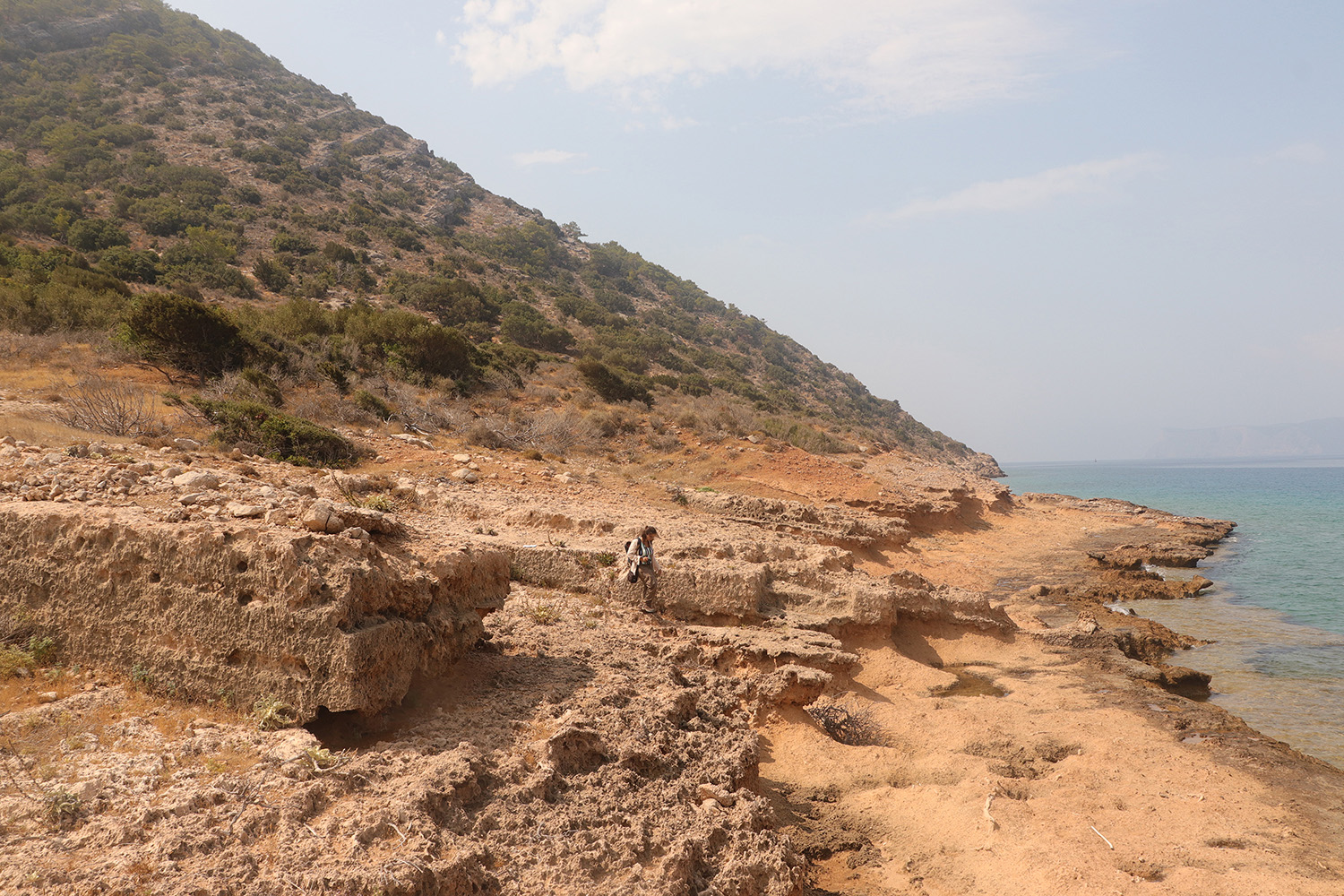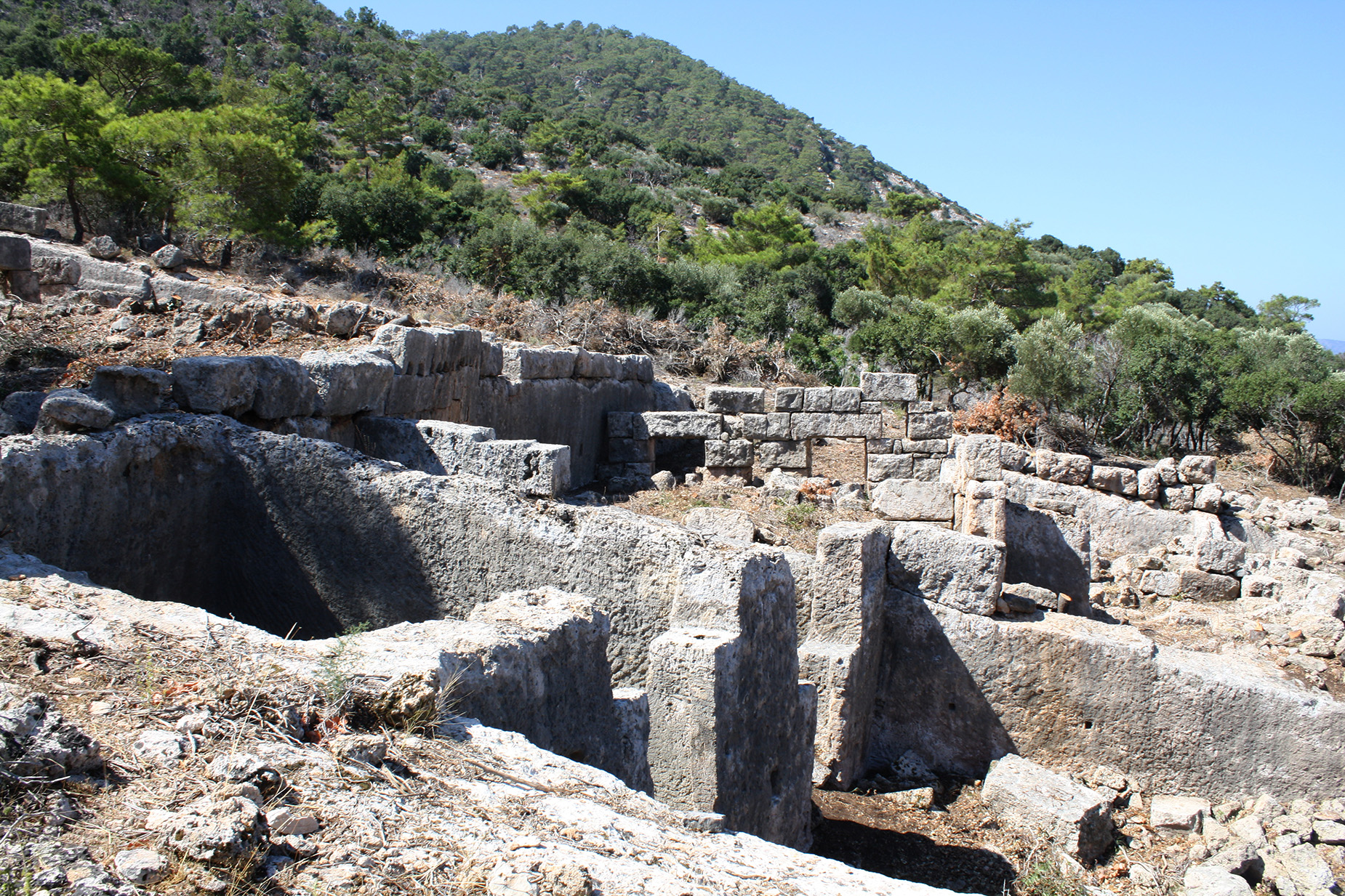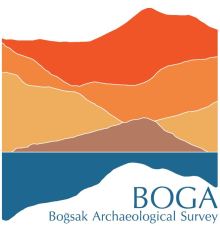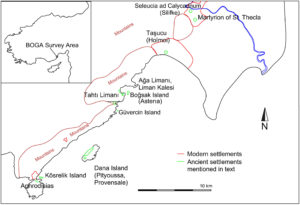Boğsak Archaeological Survey
Under the direction of Dr. Günder Varinlioğlu since its beginning in 2010, the Boğsak Archaeological Survey (BOGA) incorporates landscape and maritime archaeology, architectural surveys, ethnography, anthropology, and archaeometric and geoarchaeological analyses to evaluate antique settlements in the Taşucu Gulf.
During late antiquity (4th-7th century CE), the region saw significant maritime traffic—much of it likely related to the government-subsidized annona trade with Constantinople—as well as a boom in settlement, church construction, and an influx of pilgrims to local holy sites such as the Martyrion of St. Thecla on the outskirts of modern Silifke. Isauria (as the province was known in this period) was famous for its skilled masons and builders in the late 5th and 6th centuries. These craftsmen worked on some of the most important construction projects of the day (some likely commissioned by emperor Zeno, a native of the region), including churches and monasteries from Syria and the Levant to Hagia Sophia in Constantinople; during the same period, Isaurians were also prominent in the Byzantine army. Pottery finds from Boğsak Island indicate a continued Byzantine presence into the 12th century, but study of the region’s medieval and post-medieval settlement history is still in its early stages.


The KUDAR-supported Maritime Archaeology team in BOGA has conducted two seasons of shoreline and snorkel surveys around the islands and harbors of the survey area in 2017 and 2018. The main research goals of the maritime survey are to:
1) Identify the presence and function of coastal settlements and fortifications, maritime installations, harbors and anchorages, rock cuttings, shipwrecks, and any other evidence for ancient maritime activity in the survey area;
2) Research evidence for economic production related to maritime trade, including coastal or island quarries, wine and olive oil production etc. as well as trade goods imported by sea;
3) Explain the role of seafaring and maritime activity on the inhabitants of eastern Rough Cilicia, particularly during the apparent population and construction boom of late antiquity. Why was this region so wealthy and populous in the Roman and Byzantine periods and (at least apparently) a relative backwater during other periods? This was certainly due to a variety of environmental, political, and cultural factors, including conditions for seafaring, but many of the details of the region’s history remain obscure.
Further survey work is planned for 2021 with a team of Koç University graduate students.
Varinlioğlu, G., N. Kaye, M. Jones, R. Ingram, N. Rauh. 2017. “2016 Yılı Dana Adası Yüzey Araştırması: Boğsak Arkeolojik Yüzey Araştırmasının Antik Dağlık Kilikya’da Bir Ada Limanındaki İncelemeleri.” Arkeoloji ve Sanat 1 55 (Mayıs-Ağustos 2017): 149-60 (Journal of Archaeology and Art 1 55, May-August 2017).
Jones, M. R., 2020. “The Rock-cut Shoreline Features of Dana Island and the Maritime Landscape of the Taşucu Gulf, Rough Cilicia.” In Under the Mediterranean I, pp. 343-362, edited by L. Blue and S. Demesticha. Sidestone Press.


